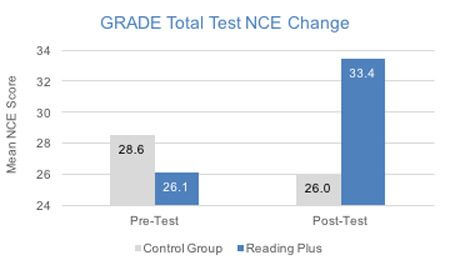
Purpose of Study:
This research measured changes in the reading proficiency of ninth-grade English language learners (ELLs) following a twelve-week course of web-based silent reading practice using the Reading Plus program (treatment group) versus the reading/language arts component of another web-based program (control group).
Study Design:
The experiment involved ninth-grade ELL students in two schools who scored at the intermediate level on the 2009 or 2010 Arizona English Language Learning Assessment (AZELLA).
At the start of the 2010-11 school year, pre-treatment reading proficiency was assessed using the Group Reading Assessment Diagnostic Evaluation (GRADE™). Students were then matched based on their pre-test GRADE scores, and one member of each pair was randomly assigned to the Reading Plus treatment group and the other to a control group that used the reading/language arts component of another web-based program.
Students used their assigned program for 12 weeks, after which the alternate form of the GRADE assessment was administered as a post-test. A total of 91 students completed this protocol.
Key Results:
Baseline total scores on the GRADE suggested that students in this study performed below the national average for this population. Reading proficiency gains achieved by ELL students who used Reading Plus were significant, and significantly different from the control group. This was true for Total Test Normal Curve Equivalent (NCE) scores on the GRADE as well as for the GRADE vocabulary and reading comprehension sub-scores.
As well, although students in the Reading Plus groups at both participating schools improved their GRADE NCE scores, students at one of the schools completed more reading practice lessons (47 versus 37). The students who completed more lessons achieved larger gains on the GRADE.

